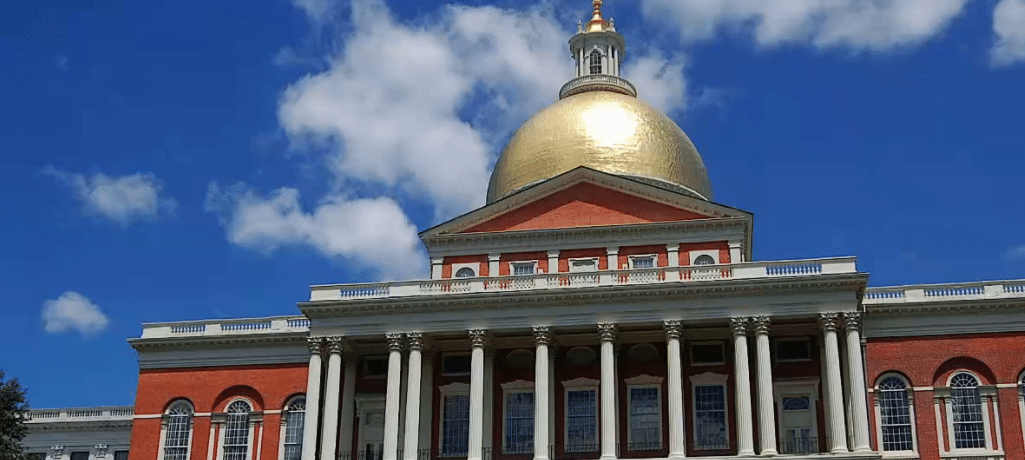Yesterday, the Massachusetts Department of Energy Resources (DOER) and Governor Charlie Baker’s office released emergency regulations doubling the size of the state’s Solar Massachusetts Renewable Target Program (SMART), bringing the program’s total capacity to 3.2 GW.
The emergency nature of enacting the regulation is being done in hopes that it will stimulate the state’s economy, which is facing stagnation and decline due to the ongoing pandemic. The solar industry has been a bright spot in the Massachusetts economy, with the initial launch of the SMART program in 2018 generating 2,500 applications in the first week, climbing all the way up to 11,000 after 10 months.
The program is implemented in 200 MW incentive “blocks,” with compensation rates decreasing by 2% per block for behind-the-meter systems and 4% per block for front-of-the-meter systems. The new regulation upped the total amount of blocks to 16, while adding the requirements that 5% of each block be reserved for community solar projects serving low-income customers and 20% be set aside for projects between 25 kW and 500 kW. Any project above 500 kW must also include energy storage.
Certainty in the short term
“It provides some certainty to the industry,” said David Gahl, senior director of state affairs, northeast for the Solar Energy Industries Association (SEIA). “The first 1,600 MW were filling up quickly and there were a lot of questions that the industry had about what the future was going to look like. This provides a runway for solar firms: the can still build and sell projects to customers based on a known framework going forward.”
And while Gahl and SEIA as a whole lauded the new regulation, he recognizes that there’s still questions regarding the state’s energy future, specifically in achieving the net-zero carbon emissions that Gov. Baker and the legislature have expressed interest in.
Like Gahl, Vote Solar celebrated the news while still pointing out areas of improvement down the line.
“We appreciate DOER’s incremental improvements to the SMART program, which included a larger expansion than their original proposal. But Massachusetts is leaving local jobs, economic investment, and pollution-reducing technology on the table in a time when an international health and economic crisis, and looming climate crisis, demand more,” said Boston-based regulatory director for Vote Solar, Nathan Phelps.
Vote Solar also recommended that the state “create a specific program to develop solar serving low-income, environmental justice and other disadvantaged communities with clean, cost-saving solar power” as a separate 1,600 MW project tranche.
On the other hand, The Coalition for Community Solar Access (CCSA) had nothing but praise for the expansion of community solar under the new SMART regulation:
“We applaud the Baker Administration and DOER for supporting local, clean energy at this crucial juncture. Expanding SMART by 1,600 MW – a doubling of the program – is a very positive step that will help the Commonwealth achieve its climate goals, including through the deployment of community solar,” said Erika Niedowski, northeast director for CCSA.
Additional incentives
The new SMART also includes adders for projects located on brownfields and landfills, as well as canopy projects and projects located on agricultural lands. Projects that incorporate trackers and projects that integrate pollinator habitats are eligible for adders as well, while subtractors are applied to projects located on undeveloped land.
This content is protected by copyright and may not be reused. If you want to cooperate with us and would like to reuse some of our content, please contact: editors@pv-magazine.com.









By submitting this form you agree to pv magazine using your data for the purposes of publishing your comment.
Your personal data will only be disclosed or otherwise transmitted to third parties for the purposes of spam filtering or if this is necessary for technical maintenance of the website. Any other transfer to third parties will not take place unless this is justified on the basis of applicable data protection regulations or if pv magazine is legally obliged to do so.
You may revoke this consent at any time with effect for the future, in which case your personal data will be deleted immediately. Otherwise, your data will be deleted if pv magazine has processed your request or the purpose of data storage is fulfilled.
Further information on data privacy can be found in our Data Protection Policy.